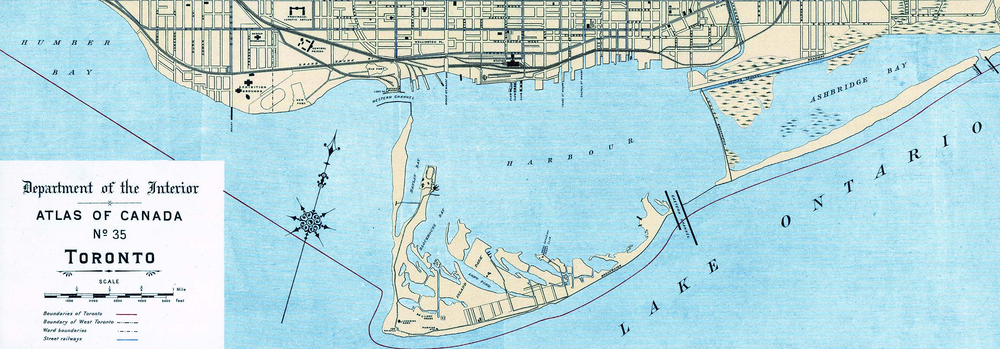steveintoronto
Superstar
That reference was to this:I get you, but when replying to someone saying "these days", it's not ideal to use an example of expropriation that happened in the 1970s.
It was just this year that the following was finally resolved, IIRC. Pardon the length, but I see a real opening for the Feds to do much the same with the air-rights over the USRC:crs1026 said: ↑
Federal authority is seldom exercised unilaterally these days
http://tvo.org/article/current-affa...ze-will-pickering-airport-plans-ever-take-offRouge Park is now twice its size. Will Pickering airport plans ever take off?
Published on Jul 23, 2015
by John Michael McGrath

The federal government is more than doubling its commitment to Rouge Park.
Rouge Park is about to get bigger. A lot bigger. Last week, Prime Minister Stephen Harper announced the federal government was more than doubling the area of the park’s federal lands, from 5,000 acres to 10,200 acres.
Like the initial federal lands that were used to create the park, the new additions will come out of the lands in Pickering originally expropriated in the 1960s for the purpose of building a second major airport in the GTA to complement Pearson International in Mississauga.
The original land commitment has been gradually sliced away and given to parkland, and political rhetoric has been dialed back from gung-ho bombast to a more cautious evaluation of “economic potential,” which raises the question: Is an airport in Pickering still a realistic proposal?
Mathematically and geographically, the answer is yes. While the feds have given up more than half of the land they’ve held for decades, the remaining 9,600 acres are more than double the area of Pearson International Airport (4,600 acres) with plenty of room left over for related “economic development” areas associated with a large airport. Additionally, the feds have made sure the land they’re hanging on to is closest to the highway and rail links nearby, a must for any future airport.
Land severances haven’t closed any doors, but activists who’ve spent decades opposing a new airport in Durham Region say recent moves by the government give them a stronger hand.
“What they did say, and we’re going to hold them to it, is there has to be a sound business case for an airport. We’ve said all along there is no sound business case,” says Mary Delaney of Land Over Landings. “If there was one, there’d be an airport here.”
Following Stephen Harper’s announcement, Transportation Minister Lisa Raitt announced the government would appoint an independent advisor to consult with interest groups in and around the GTA on the economic potential of the Pickering lands, including (but not only) a future airport.
The original commitment in 1972 was a total of 18,600 acres, though today government land managers place the estimate closer to 19,800 acres. Raitt’s office confirmed that the current plan is to retain 9,600 acres “for economic development, including a potential future airport” but adds “no decision has been made on the type or timing of an airport.”
That’s a far cry from the language used by the late Finance Minister Jim Flaherty, who in 2013 declared an airport was finally going to be built in lands that had been in planning limbo since 1972.
“I’m here to confirm that the uncertainty ends today,” Flaherty said two years ago. “The Harper government is moving forward with a responsible and balanced plan for the development and preservation of the Pickering lands.”
The argument for a new, large airport rests largely on the prospect of air travel growing enough to overwhelm the capacity that exists at Pearson and other regional airports. The Greater Toronto Airport Authority estimated in a 2010 report that with baseline assumptions about the growth of air travel, even substantial expansions at Pearson, Waterloo and Hamilton airports would leave the region’s airports at capacity by 2033. More pessimistic assumptions about travel growth push that deadline into the future, to about 2041.
Other groups are willing to settle for something more modest. Since the privately-run Buttonville airport announced its impending closure in 2010 (it’s now expected to stay open until late next year) small aircraft pilots have been looking for a replacement. Land Over Landings also argues against a replacement for Buttonville, saying the volume of air traffic doesn’t justify it.
Mark Brooks, a partner with Pickering Air Park which is proposing to build a privately-funded airport in the Pickering lands, disagrees.
“We could put a grass strip down on that land tomorrow and start making money,” Brooks says.
However, a small airport to replace Buttonville would still only amount to about five per cent of the remnant the federal government is hanging on to. Even if it were built it would be a dramatically smaller vision for the airport lands than what was first proposed in the 1970s.
Which isn’t to say a small airport can’t grow into a bigger one. That’s the plan behind the Pickering Air Park – to start small with a better chance of being profitable, and potentially grow into something larger.
Brooks says federal taxpayers paid for the Pickering lands with the expectation of getting a new airport for their money. “That was the purpose of the Pickering lands, to build infrastructure for generations to come. Not as hobby farms.”
Map by Michael Lehan
The present Trudeau regime could play the USRC air-rights to immense PR benefit if they play their cards right on it. A *National Park* right in Toronto!
I'll provide supporting legal reference later. Edit to Add: It would most likely take a motion through Parliament to amend an existing Act to do it, but they have the majority to do it.
Then let the developers take it to court...phhhhhh....
Last edited:





